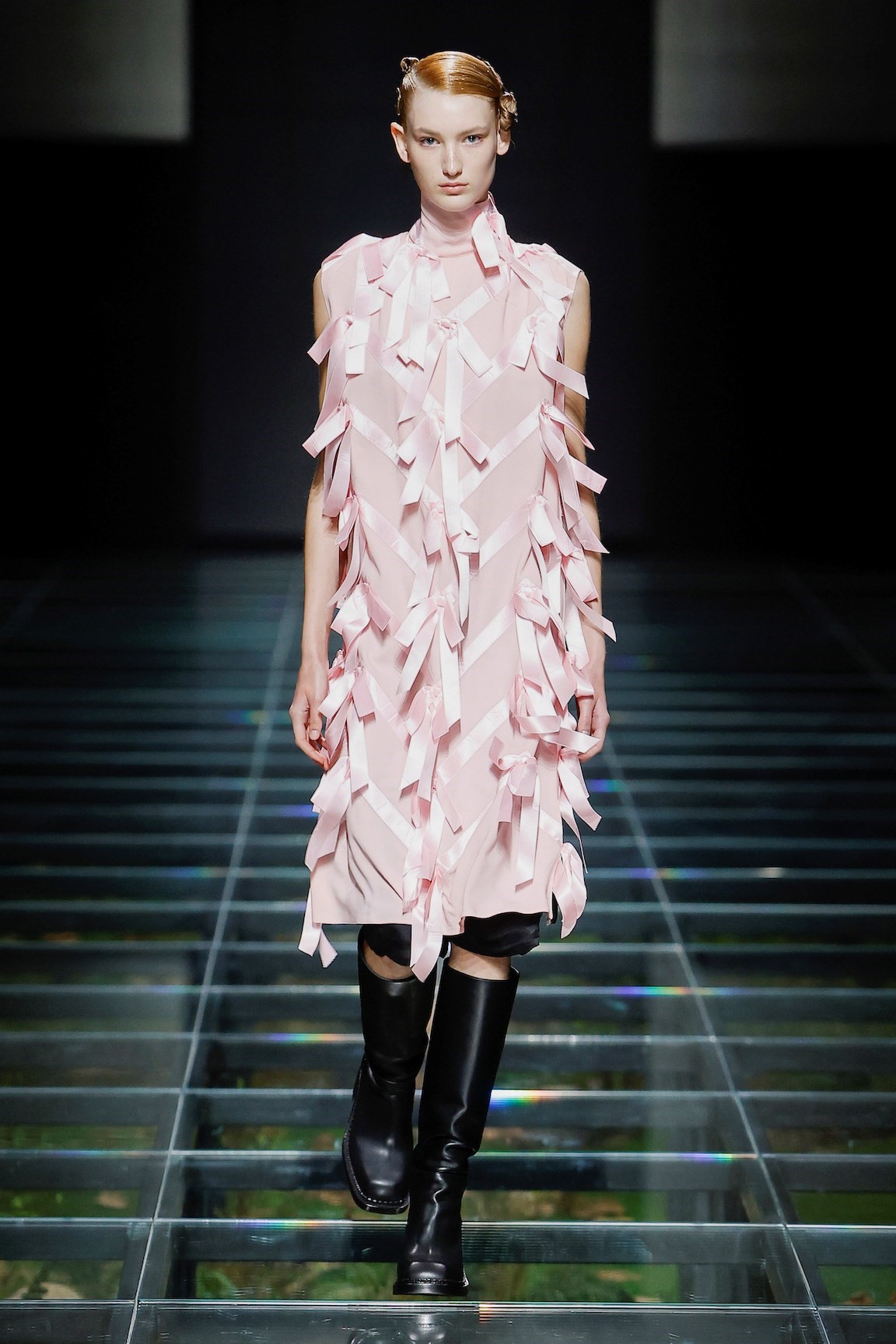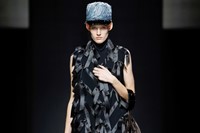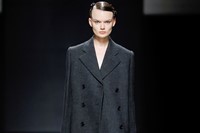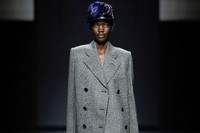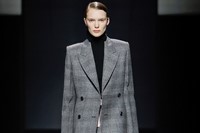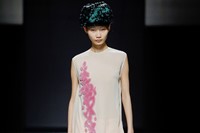Instinct was the big message of the Prada show – instinctive attractions to pieces of the past. Not Prada’s past, no – that would be easy. This was, rather, about a wider vista of history, fashion shaped by remembrances of things past. Remembrance being the important notion.
“I hate the idea of nostalgia – as if history doesn’t teach you,” said Miuccia Prada. “This is a collection shaped by history. It’s not about nostalgia, it’s about understanding. Who we were, why we dressed like that. It’s about remembering our past, using this knowledge to move forwards.” “We strive to make something beautiful. And you cannot talk about beauty without going to the past,” said Raf Simons. “You cannot erase the history of beauty – the history is what defines our ideas of beauty today.”
Hence this collection was, without doubt, the most overtly historical Prada and Simons have produced in their four-year partnership, with garments embedded with echoes of yesteryear. There were evocations of Victorian crinoline and bustles, the high necks and hooked buttons of Edwardian tea gowns, Twenties Garçonne dresses, nip-waist mid-century tailoring, but they were spliced apart, sometimes literally. That’s where the instinct came in – chronology was ditched, mixed with abandon, crashing together different eras and styles in spontaneous, dichotomous juxtapositions. Skirts like aprons in wool flannels and tweed were tied over fragile silk slips, sometimes with flounces and ruffles in the back. Biker jackets were paradoxically embedded with prim collars and cuffs snaked with buttons, models wore hats, whose mere presence here seemed like a historical throwback. And one of Miuccia Prada’s least favourite things – “stupid little bows”, as she terms them – became endemic, smothering shifts in this utmost cliché of the feminine. There was even one in baby-bassinet pink.
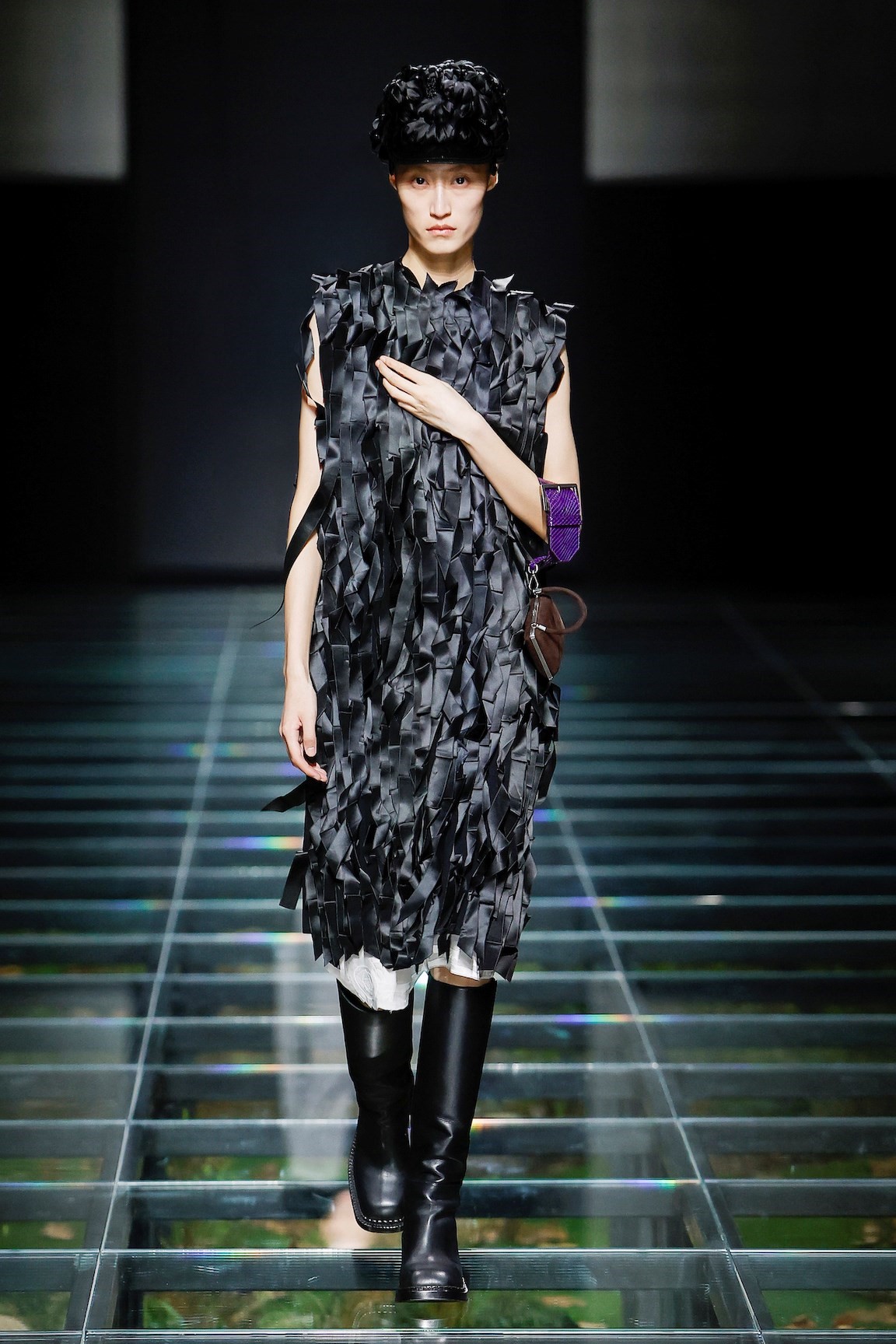
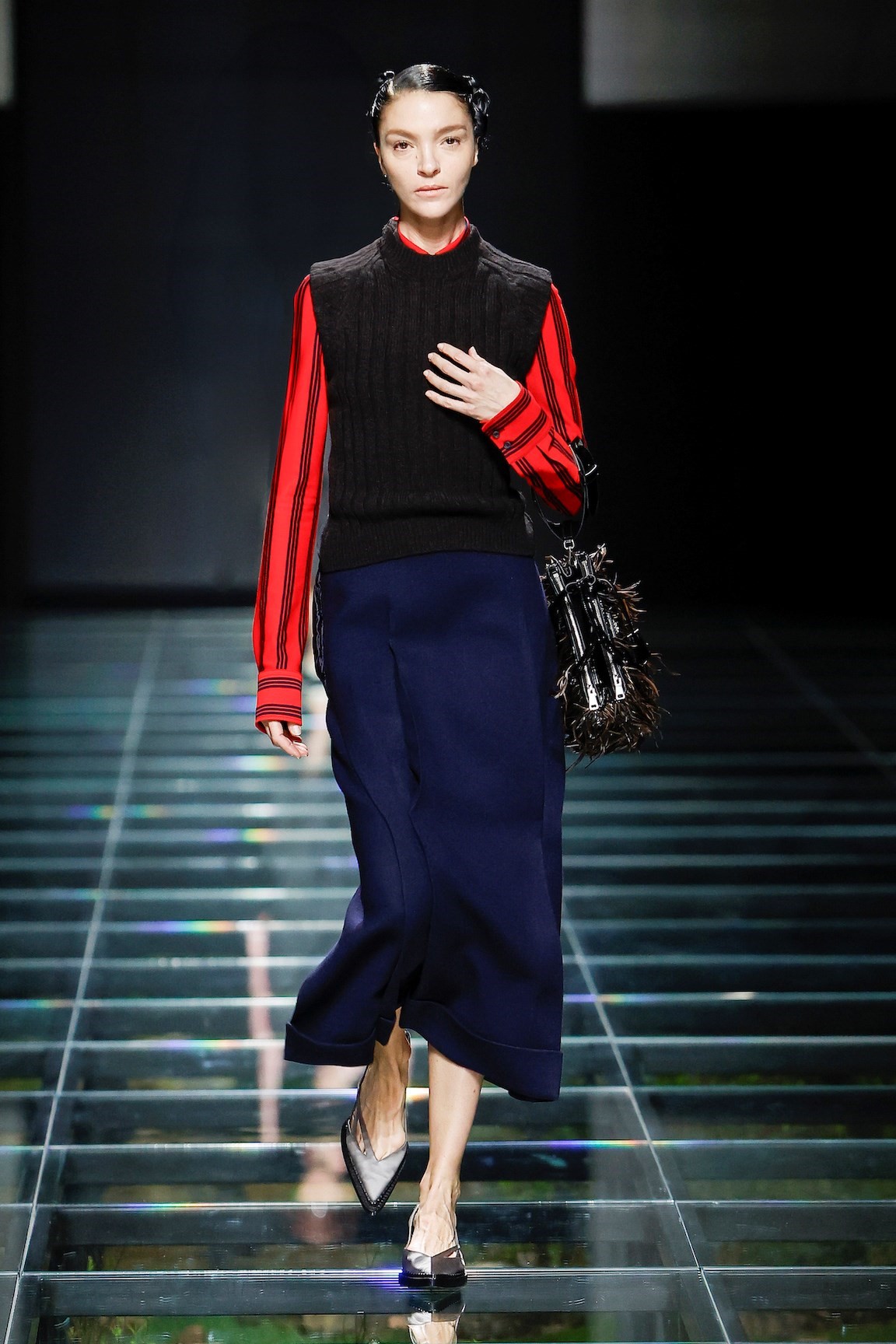
So those were archetypical symbols of beauty that were, here, reappropriated, reassessed. Which was the idea throughout, nothing remaining static, never exactly reproduced. At the end, silhouettes that resembled the greatest hits of Christian Dior and Cristóbal Balenciaga were executed in Prada’s own greatest hit, industrial nylon, with protective gloves. Scarred with scuba zips, they wound up resembling hi-tech sportswear, albeit with spreading skirts or off-the-shoulder necklines, a fusion of femininity of then and now.
Of course, both those aforementioned couturiers are currently the subject of their own biographical mini-series, to varying degrees of success (in short, Balenciaga is good, The New Look not so much). And central to each is a reactivation of their clothes, reworked for today, for us to live a past few still recall. There was an idea of that in this Prada show – particularly because Miuccia Prada has explicitly stated how her use of retro isn’t about the clothes they remind us of, but the people. “History, for me, is always connected to the lives of people,” she said today. “References to past fashion speaks about past lives, and also how we live today.” And, of course, the idea of learning from history has particular resonance in a world being pulled apart by conflicts that span decades, seemingly trapped in a ceaseless, Groundhog Day of repetition of past mistakes, lessons unlearned.
Those are big themes – and Prada always thinks big – but at the heart of this collection was a focus on and love for fashion, engaging with the task at hand – namely, to create something beautiful. “At its heart this collection really expresses a love for fashion, our love for fashion,” said Raf Simons. Which is perhaps why, although models seemed at first glance to be engaged in the typically Prada gesture of coats clutched together at the collar, when they got closer they were actually holding their hands over their hearts. It looked like a salute, or a prayer. To love, perhaps, or maybe to understanding.
